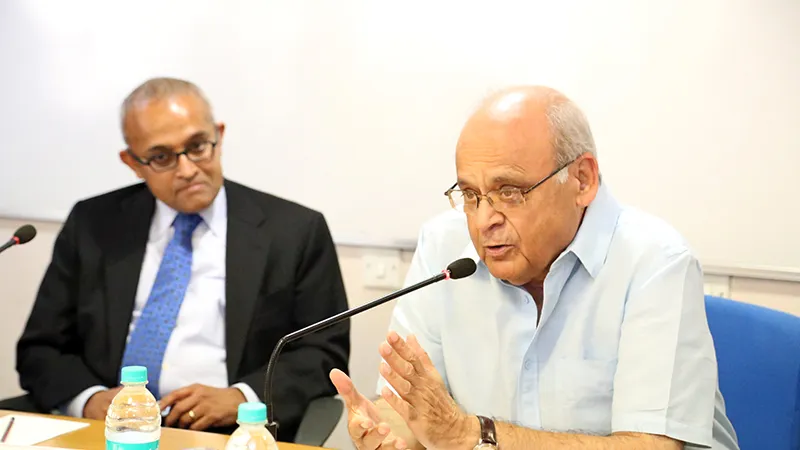Lashkar-e-Tayyeba, the terrorist group behind the Mumbai 2008 attacks and operating from Pakistan, is likely to continue with its terror campaign against the security forces in India, according to a study on LeT done by Dr Subrahmanian and his team at the University of Maryland.

Lashkar-e-Tayyeba, the terrorist group operating out of Pakistan, is likely to continue with its terror campaign against the security forces in India in the near future. LeT, the group behind the Mumbai 2008 attacks, continues to enjoy the patronage of Pakistan Army, and is aligned with the Taliban and other militant groups targeting both India and Afghanistan. These were some of the observations made by Prof. V. S. Subrahmanian from the University of Maryland during his presentation on "Lashkar-e-Tayyeba: Analysis and Policies" at ORF Delhi on May 29, 2013.
After outlining different threat projections, he dwelt at length on how to contain and disrupt the terrorist group and its activities against India. He said the group’s operational capabilities could be seriously undermined by creating dissension within the organisation, disrupting its information campaign and its association with the military.
Dr Subrahmanian’s conclusions and findings were part of a five-year study on LeT which he and his colleagues carried out at the Center for Digital International Government and Lab for Computational Cultural Dynamics at the University of Maryland.
Explaining the study in detail, Prof. Subrahmanian said that the Big Box Retailer analogy adopted by online stores such as Flipkart and Amazon was similar to the model adopted by his team in analysing trends in the LeT’s behaviour. The model tracks the behaviour of users and predicts the likely customer response which enables such companies to create marketing strategies. Similarly, tracking the LeT’s behavioural pattern over the years assists in forecasting the group’s actions. This in turn could assist in policy making for counter-terrorism efforts. Similar models have been used to understand and predict behaviours of other international terrorist groups such as Hamas and Hezbollah in the past.
While explaining the study done on LeT, the variables included were both numerical and categorical in nature, comprising of environmental factors such as social, cultural, economic and military aspects affecting LeT, and action variables such as incidents of attacks on civilians, public, tourist and transportation sites. These variables enable the system to predict the behaviour of the LeT as a response to actions taken by the government. Using these, rules or algorithms are created which result in predicting the possible behaviour of the organisation.
Prof. Subrahmanian stated that there were almost 15,000 rules that were created using these variables. For instance, there is a high probability of the LeT carrying out attacks after a certain number of LeT personnel have been arrested and the group’s cadres remain cohesive. Similarly, the group is likely to target civilians and not public, tourist and transportation sites when the government acts against the LeT, or when LeT commanders are killed. Citing another example, Prof. Subrahmanian noted in hindsight that these rules could have been used to predict the Mumbai attacks. The testimony of David Coleman Headley indicated that tensions within the LeT regarding the Pakistani government’s alliance with the US laid the seeds for the Mumbai attacks in September 2008.
He also made policy suggestions to reign in the LeT which included disrupting the support offered to LeT by the Pakistani military and disrupting or monitoring the communication campaigns of the LeT. He highlighted the importance of using electronic modes of communication such as the cyber space to achieve these goals. Another point noted by him was that given the probability of attacks increasing after the arrest of LeT personnel, security staff may consider desisting from running a campaign of raids and arrests of LeT operatives.
Prof. Subrahmanian also noted that though the system was created by carefully selecting data, there were room for errors as inputs could be inconsistent with the software’s assumptions. Errors in coding of collected information are a major problem which affects the system’s ability to predict, he cautioned. However, he said that such computational methods assist in analyzing terrorist behaviours from both strategic and tactical perspectives but should be accompanied with human expert inputs before making policy decisions.
The views expressed above belong to the author(s). ORF research and analyses now available on Telegram! Click here to access our curated content — blogs, longforms and interviews.




 PREV
PREV

